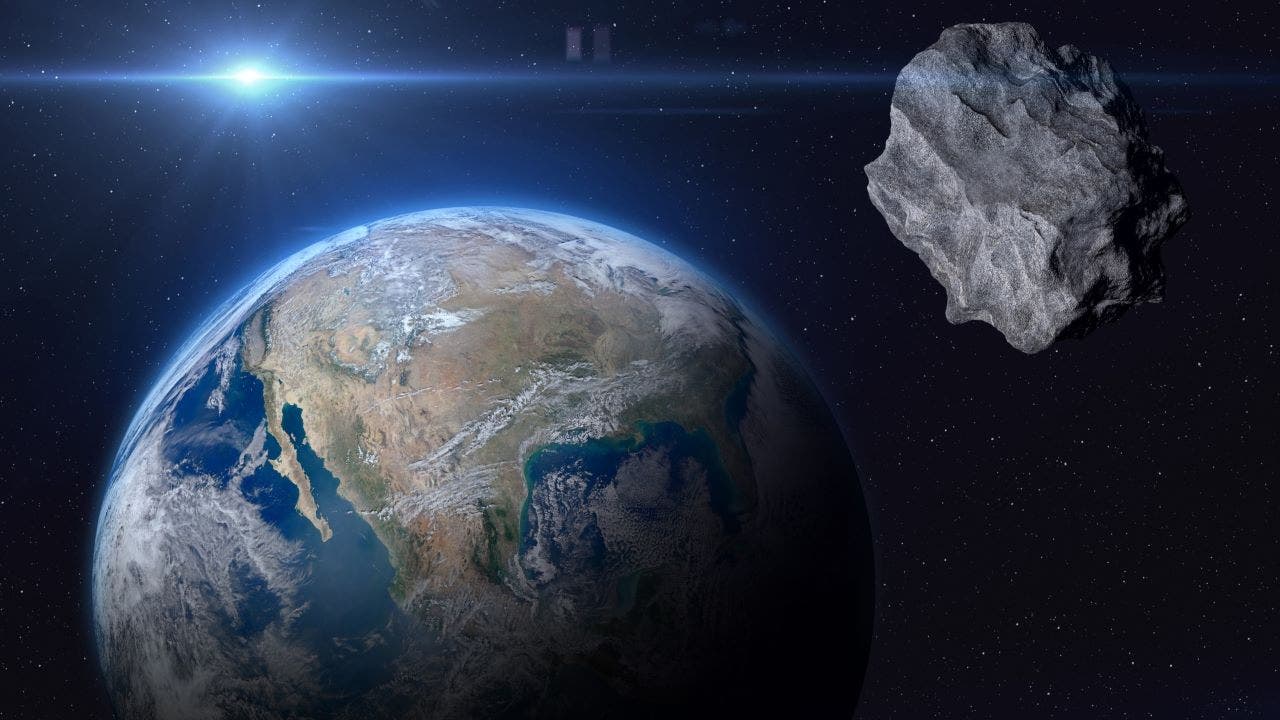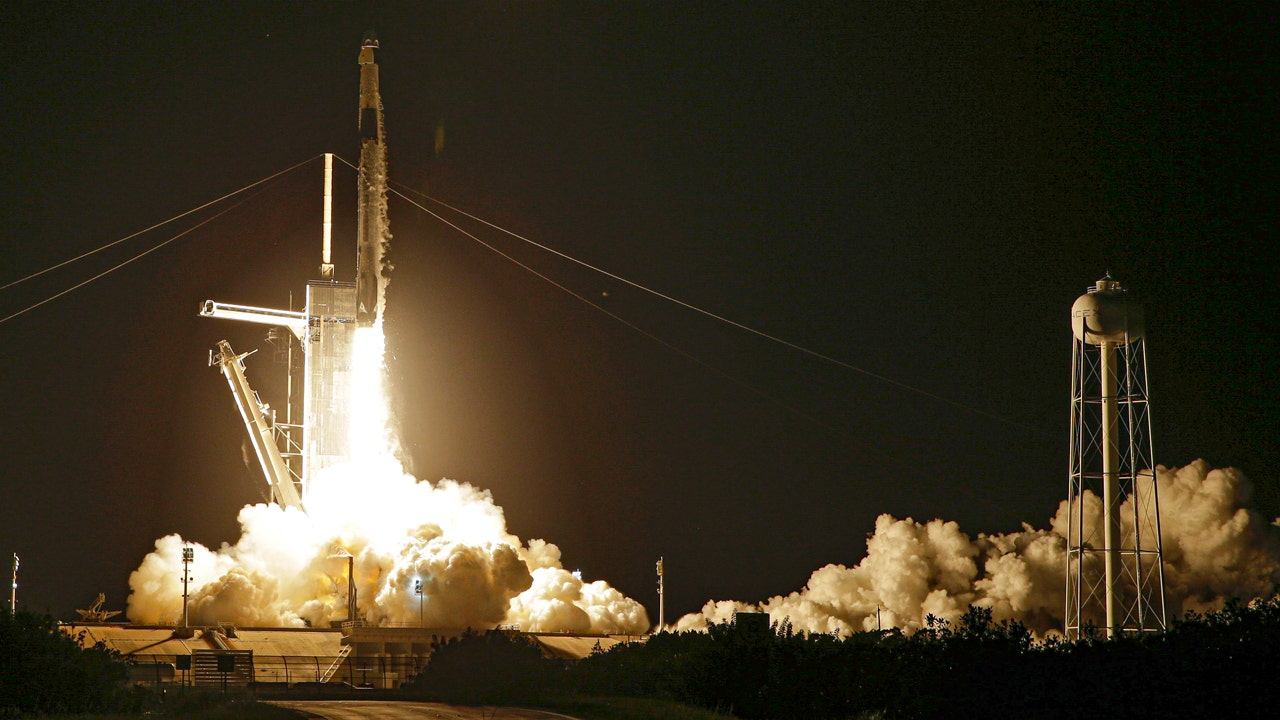The sun emitted its biggest flare in over a decade on Tuesday, following days of severe solar storms that fell on Earth and gave skywatchers as far south as Florida a view of the northern lights.
The National Oceanic and Atmospheric Administration (NOAA) Space Weather Prediction Center shared news of the solar flare on social media, saying, “Not done yet.”
According to the post, a solar flare is an eruption of energy from the sun that generally lasts minutes to hours.
NASA’s Solar Dynamic Observatory caught the bright flash of the X-ray flare, which appeared to have a magnitude of X8.7, though it was originally reported as X8.8.
RARE SOLAR STORM WOWS STARGAZERS ACROSS AMERICA: ‘SO AWESOME!’
This image provided by NASA’s Solar Dynamics Observatory shows a solar flare, the bright flash at right, on Tuesday. The sun produced its biggest flare in nearly a decade Tuesday, just days after a severe solar storm pummeled Earth and created dazzling northern lights in unaccustomed places. (NASA/SDO via AP)
NOAA also said this was the biggest flare of the current 11-year solar cycle, which is nearly its peak.
Earth should be in the clear as the flare erupted from a part of the sun moving away from the blue planet.
Still, users of high frequency (HF) radio signals could experience short-term degradation or a complete loss of signal on the sunlit side of earth.
GEOMAGNETIC STORM HITS EARTH CREATING NORTHERN LIGHTS, DISRUPTING RADIO COMMUNICATIONS
Once scientists gather data from various sources, they may discover the flare was much stronger than originally reported, Bryan Brasher of NOAA’s Space Weather Prediction Center in Boulder, Colorado, told the Associated Press.
MILLIONS OF PEOPLE ACROSS OKLAHOMA, SOUTHERN KANSAS AT RISK OF TORNADOES AND SEVERE THUNDERSTORMS
The flare comes after nearly a week of flares and coronal plasma ejections spat toward the planet that threatened disruptions to power and communications systems on Earth.
NASA said one of its environmental satellites rotated unexpectedly during the geomagnetic storm over the weekend. The rotation was due to the satellite’s reduced altitude from space weather, and it ultimately went into safe mode as a result.
CLICK HERE TO GET THE FOX NEWS APP
The space agency also said the seven astronauts onboard the International Space Station were advised to remain in areas with strong radiation shielding. NASA later explained the astronauts were never in any danger.
The Associated Press contributed to this report.
Greg Wehner is a breaking news reporter for Fox News Digital.
Story tips and can be sent to Greg.Wehner@Fox.com and on Twitter @GregWehner.




